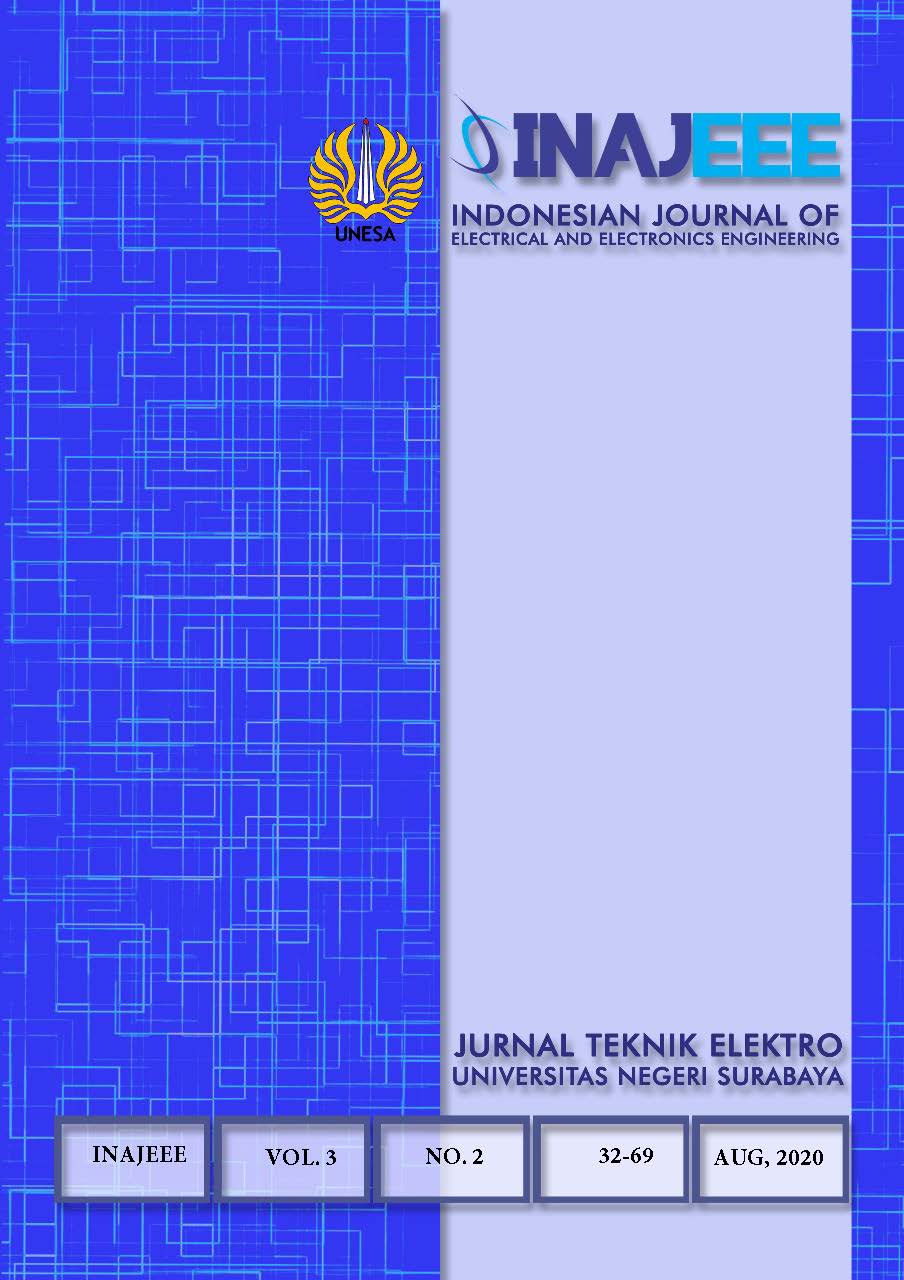Literature Study of Harvesting Energy with Resources Radio Frequency
DOI:
https://doi.org/10.26740/inajeee.v3n2.p48-55Keywords:
Energi Harvesting, Frekuensi Radio, AntenaAbstract
Energy harvesting is the process of harvesting energy from external sources such as solar energy, heat, wind and electromagnetic waves / radio frequencies. dimension. Research on harvesting energy needs to be developed because the use of non-renewable energy is increasingly limited. The use of radio frequency (RF) as a source of energy for harvesting is an effort to create environmentally friendly energy. This is due to the growing use of telecommunications technology. Various studies have been conducted by harvesting RF from various telecommunication signals and broadcasting media (AM / FM, TV / DTV, GSM signals, Wi-Fi signals). The purpose of writing this article is to study literature on the use of harvesting energy, especially those originating from radio / RF frequencies. A simple harvesting energy harvesting system consists of an antenna and a voltage rectifier circuit. The antennas used for RF energy harvesting have different designs according to the type of signal captured, including using periodic log antennas, archimedean spiral antennas, patch antennas, dipole patch antennas and vivaldi antennas. The energy yield obtained from the energy harvesting process with radio frequency sources tends to be small in the milliwatt scale (1.17 µW / cm2 - 20VDC) depending on the type of antenna and radio frequency used (0.3 - 27.5 GHz) and can be applied to low power electronic devices.
Downloads
Published
Issue
Section
License
Copyright (c) 2021 INAJEEE (Indonesian Journal of Electrical and Electronics Engineering)

This work is licensed under a Creative Commons Attribution-NoDerivatives 4.0 International License.
 Abstract views: 572
,
Abstract views: 572
, PDF Downloads: 1261
PDF Downloads: 1261




